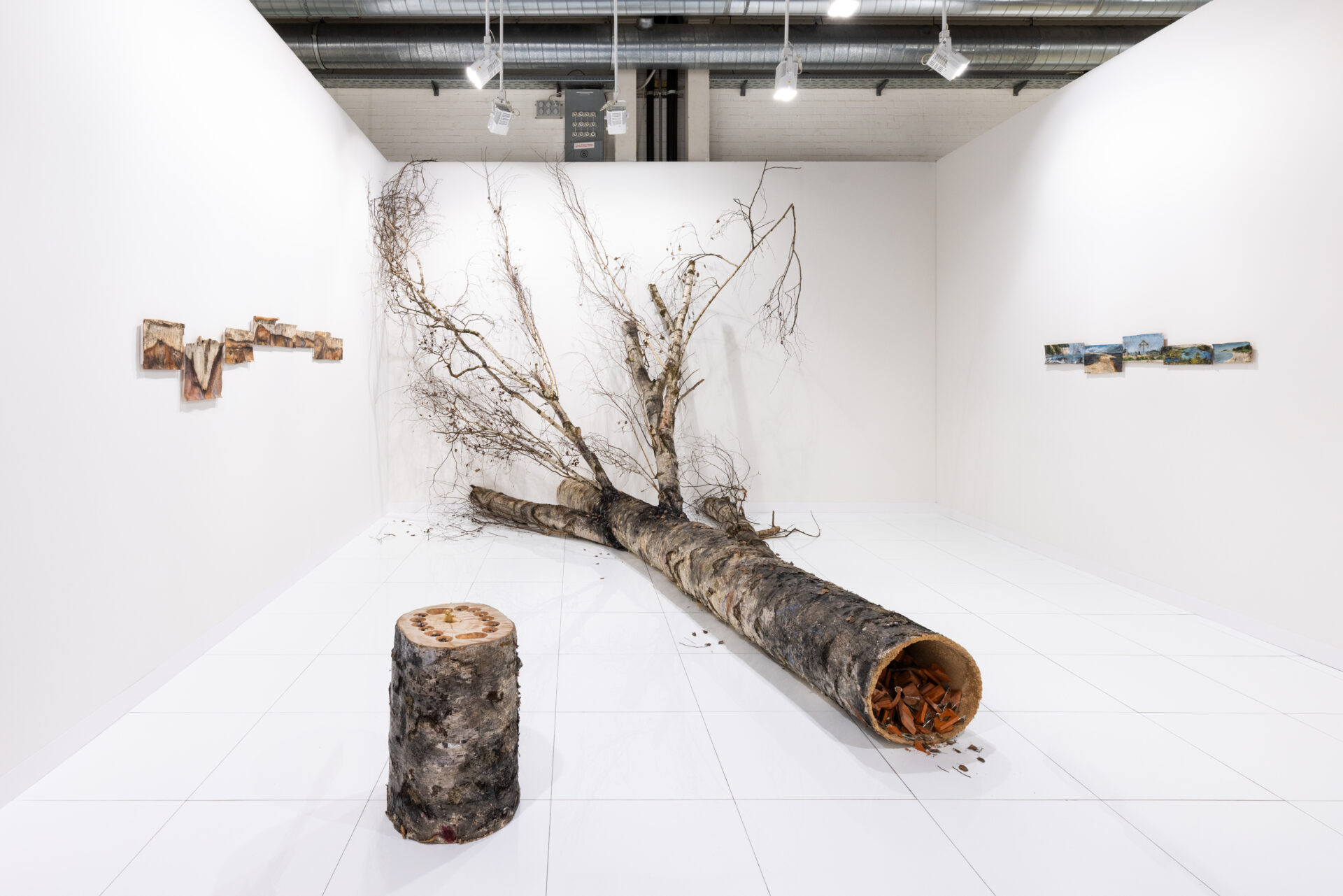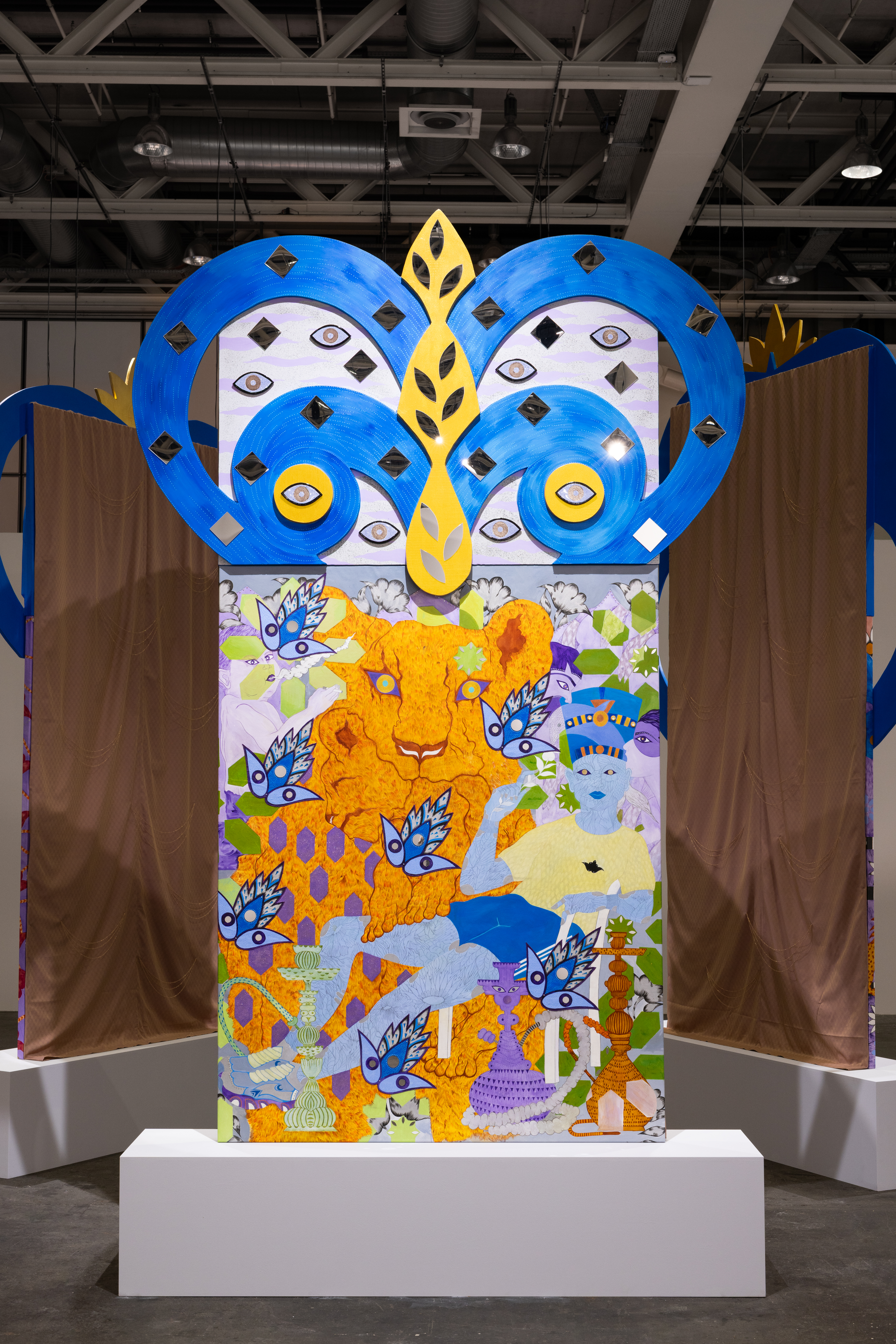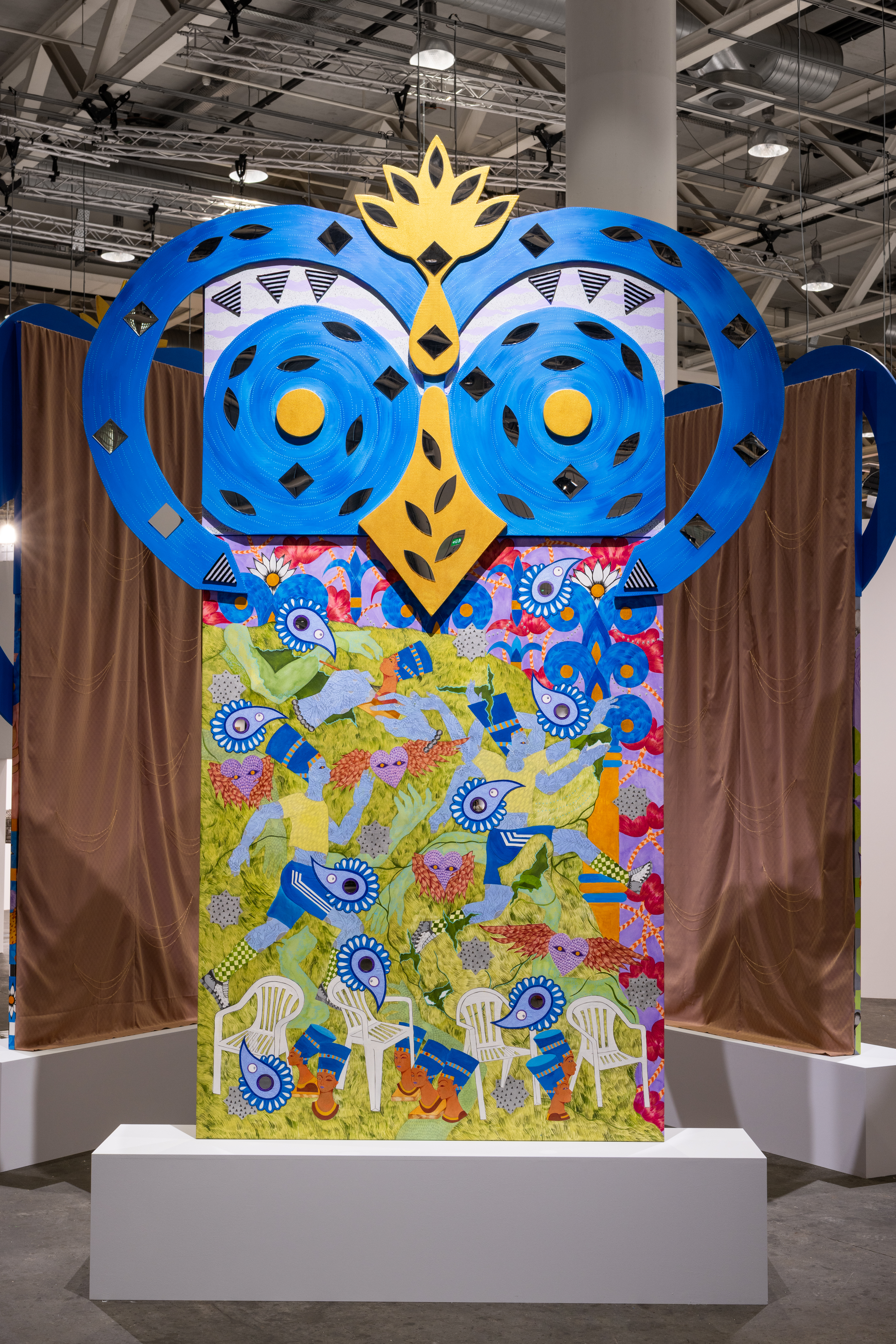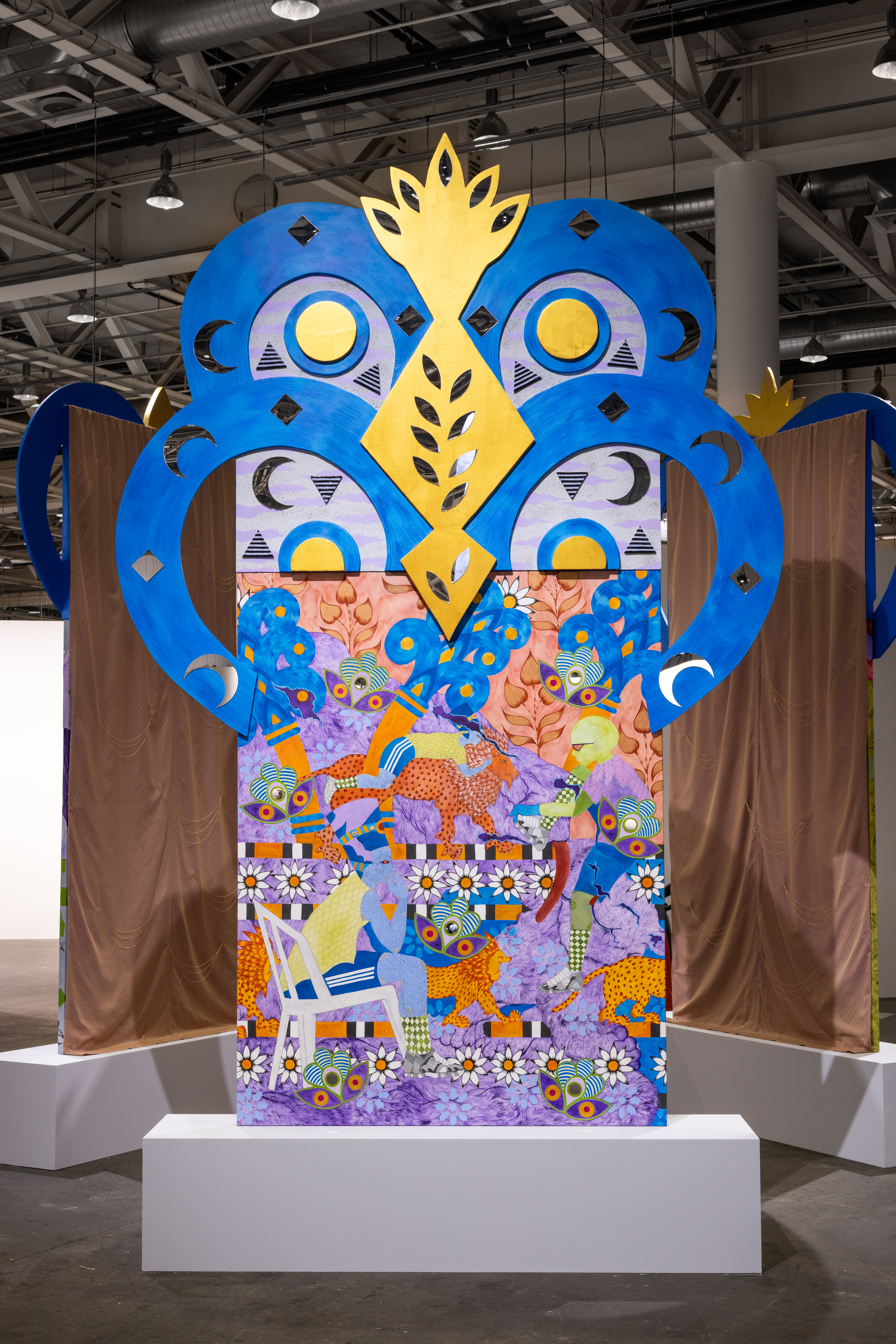Art Basel 2025
19.06. – 22.06.2025
Statements: Monilola Olayemi Ilupeju
Unlimited: Nadira Husain

Photo: Ivan Erofeev
“The Wishing Well begins with a personal memory of a fallen birch tree, reimagined as a vessel that probes materiality and the enduring myth of purity often projected onto nature. Long associated in the West with fertility, domesticity, and the rural/white/“natural” body, the birch here is recast as a porous, hybrid being shaped by contamination, entanglement, and multiplicity. Reflecting on the tree’s culturally saturated history, from European Romanticism and nationalist iconography to the Indigenous craft practices of the Anishinaabe and the Sámi, the work resists fixed meaning. The birch becomes an emptied monument; a spectral void where histories, memories, and bodies intermingle, mutate, and come undone.
Constructed from two hollow plywood forms clad in a patchwork of sustainably harvested bark from Siberia and remnants of fallen German trees, the work exudes a Frankenstinian charm. Graphite scribbles, oil pastel, charcoal powder, and pyrographic inscriptions dissolve into the bark’s paper-like surface. Earrings and fragments of a body mirror glint across it like betulin, rendering the bark a site of concealment and revelation. Amid the fair’s spectacle, The Wishing Well reads as both an elegy and an invocation: a fractured, charcoal-singed tree carcass strewn across white bathroom tiles inevitably conjures an uncanny vision of environmental collapse. The birch here is not pure, not sanctified; it is wounded, interdependent, and clinging to life. In a world obsessed with borders, clarity and control, the project insists that the most generative forms of beauty and survival emerge from muddied waters.”
— Monilola Olayemi Ilupeju, excerpt from installation text, The Wishing Well
—–

Photo: Ivan Erofeev
In The Haunted Museum, Nadira Husain unfolds a narrative around Egyptian and Babylonian artifacts displaced from their original contexts and added to the collections of European museums during the colonial period, focusing in particular on the bust of Nefertiti and Babylon’s Procession Street and Ishtar Gate, housed in Berlin’s Neues Museum and Pergamonmuseum, respectively. She reinterprets and science-fictionalizes these objects in three large, sculptural panels that blend historical references with contemporary scenarios, as seen with the image of Nefertiti reimagined as an immigrant in Berlin, becoming a symbol of the city’s post-migratory identity. Husain’s compositions offer a commentary on restitution, appropriation, and the symbolic role of museum artifacts, which she imbues with liberatory dimensions.

Photo: Ivan Erofeev

Photo: Ivan Erofeev
